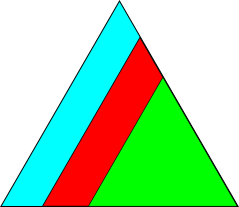pole_density_function#
- orix.measure.pole_density_function(*args: ndarray | Vector3d, resolution: float = 1, sigma: float = 5, weights: ndarray | None = None, hemisphere: str = 'upper', symmetry: Symmetry | None = None, log: bool = False, mrd: bool = True) Tuple[MaskedArray, Tuple[ndarray, ndarray]][source]#
Compute the Pole Density Function (PDF) of vectors in the stereographic projection. See [Rohrer et al., 2004].
If
symmetryis defined then the PDF is folded back into the point group fundamental sector and accumulated.- Parameters:
- args
Vector(s), or azimuth and polar angles of the vectors, the latter passed as two separate arguments.
- resolution
The angular resolution of the sampling grid in degrees. Default value is 1.
- sigma
The angular resolution of the applied broadening in degrees. Default value is 5.
- weights
The weights for the individual vectors. Default is
None, in which case the weight of each vector is 1.- hemisphere
Which hemisphere(s) to plot the vectors on, options are
"upper"and"lower". Default is"upper".- symmetry
If provided the PDF is calculated within the fundamental sector of the point group symmetry, otherwise the PDF is calculated on
hemisphere. Default isNone.- log
If
Truethe log(PDF) is calculated. Default isTrue.- mrd
If
Truethe returned PDF is in units of Multiples of Random Distribution (MRD), otherwise the units are bin counts. Default isTrue.
- Returns:
histThe computed histogram, shape is (N, M).
x,yTuple of coordinate grids for the bin edges of
hist. The units ofxandyare cartesian coordinates on the stereographic projection plane and the shape of bothxandyis (N + 1, M + 1).
